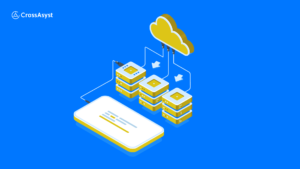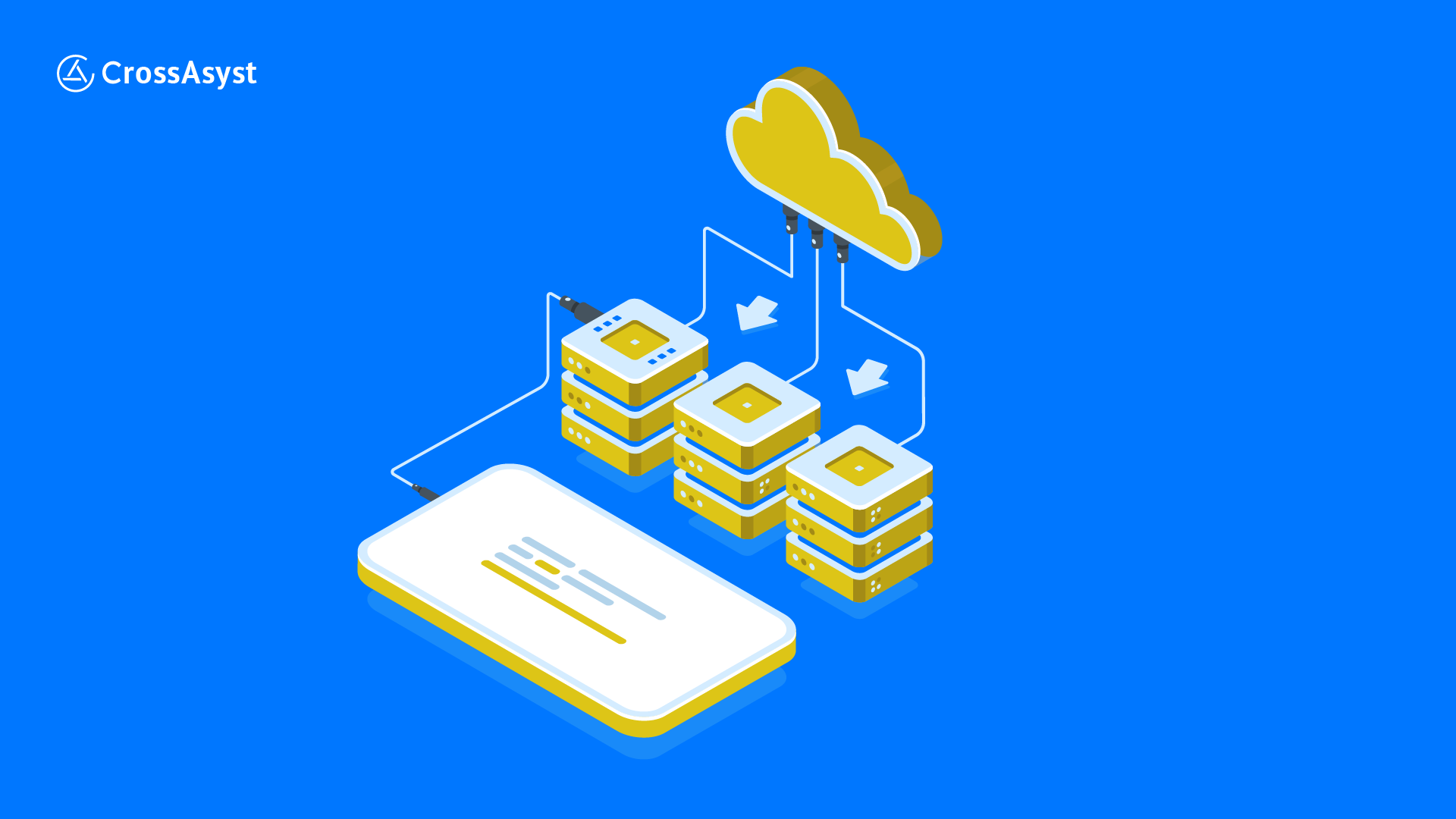
In today’s digital age, businesses are increasingly embracing the power of the cloud to drive innovation, enhance operational efficiency, and stay competitive in the global marketplace.
Cloud migration has become a pivotal strategy for organizations seeking to harness the benefits of cloud computing. However, the journey to the cloud can be a complex and challenging process. That’s where choosing the right migration strategy becomes essential.
This blog will delve into the 7 Rs framework for cloud migration—a comprehensive approach that helps organizations make informed decisions and execute seamless cloud migrations. But before we dive into the details of the 7 Rs, let’s first understand why organizations opt for cloud migration and its significance.
Table of Contents
Why Organizations Opt for Cloud Migration
Let’s start off with the top reasons why businesses ought to consider migrating from in-house servers to cloud servers.

1. Cost Efficiency
One of the primary motivations behind cloud migration is cost efficiency. By moving to the cloud, organizations can significantly reduce capital expenditures on hardware and infrastructure. Cloud services operate on a pay-as-you-go model, allowing businesses to scale resources up or down based on their needs, ultimately leading to cost savings.
2. Improved Collaboration and Accessibility
Cloud-based collaboration tools and applications enable teams to work together seamlessly from anywhere in the world. This enhanced accessibility fosters collaboration and accelerates project timelines, improving overall productivity.
3. Enhanced Security and Compliance
Leading cloud providers invest heavily in security measures and compliance certifications. Migration to the cloud can often result in improved data security and regulatory compliance, ensuring that sensitive information remains protected.
4. Scalability and Flexibility
Cloud services offer unparalleled scalability. Businesses can effortlessly adjust their resources to meet growing demands or unexpected spikes in traffic, ensuring that their applications run smoothly and efficiently.
5. Business Continuity and Disaster Recovery
Cloud-based disaster recovery solutions provide a safety net against data loss and system downtime. In the event of a disaster, organizations can quickly recover their data and applications, minimizing disruption to their operations.
Now that we’ve established the importance of cloud migration, let’s explore the step-by-step process of executing a successful migration:
-
Prepare
- Define Objectives and Goals: Establish clear migration objectives, such as cost savings, improved performance, or enhanced scalability.
- Assess Current Environment: Evaluate your existing IT infrastructure, applications, and data. Identify gaps in skills or technologies and build a business case for each application to be migrated.
- Choose the Right Cloud Model: Select between public, private, or hybrid cloud deployment models based on your needs.
-
Plan
- Develop a Migration Team: Assemble a team with the expertise necessary for planning, executing, and managing the migration.
- Conduct Risk Assessment: Identify potential risks and develop mitigation strategies.
- Create a Detailed Migration Plan: Outline the timeline, resources, and tasks. Decide on the cloud architecture and address compliance and security requirements.
-
Migrate
- Choose Your Migration Strategy: Use the 7Rs framework to determine the best approach for migration. Rehost (Lift and Shift) moves applications to the cloud with minimal changes. Refactor (Rebuild) redevelops apps to leverage cloud benefits. Re-architect (Redesign) redesigns apps for full cloud integration. Replatform (Repackage) makes minor adjustments for cloud compatibility. Retire decommissions outdated systems, while Retain keeps some apps on-premises for compliance. Repurchase involves replacing legacy systems with cloud-based solutions.
- Execute the Migration: Implement your chosen strategy, ensuring careful monitoring and addressing any issues.
-
Operate
- Manage Cloud Environment: Monitor performance, manage resources, and maintain security and compliance. Refine operations based on feedback and performance data.
- Training and Skill Development: Ensure your team is trained to manage cloud resources effectively.
-
Optimize
- Continuous Improvement: Optimize cloud operations for performance and cost-efficiency. Identify opportunities for further enhancements and leverage cloud-native features to drive greater business value.
- Develop Disaster Recovery and Backup Strategy: Implement robust solutions to safeguard data and ensure business continuity.
By following these integrated steps and phases, organizations can effectively manage the cloud migration process, minimize risks, and maximize the benefits of their cloud investment.
7 Cloud Migration Strategies in Details
Each of the 6 Rs offers a unique approach to cloud migration, allowing organizations to tailor their strategy based on their specific needs, objectives, and constraints. The choice of which R to use depends on factors such as the nature of the applications, budget considerations, and the desired long-term outcomes of the migration journey.

1. Rehost (Lift and Shift)
Rehosting, often referred to as “Lift and Shift,” is a migration strategy where organizations move their applications and data from their on-premises infrastructure to the cloud with minimal modifications.
This approach is often chosen when organizations want to migrate quickly and at a lower cost, especially when dealing with legacy systems that may not be cloud-native.
Key Characteristics
- Rehosting is one of the fastest ways to migrate to the cloud. It involves replicating existing server images or virtual machines in the cloud environment, which reduces the need for extensive code changes.
- The primary goal is to replicate the existing environment in the cloud, so there’s minimal rewriting or redesigning of applications. This can save time and resources.
- Rehosting is ideal for legacy systems that may not be easily refactored or rearchitected for the cloud. It allows these systems to take advantage of cloud infrastructure without a complete overhaul.
Benefits
- Organizations can start benefiting from cloud resources almost immediately since there’s minimal downtime during migration.
- While not as cost-efficient as fully cloud-native approaches, rehosting can still lead to cost savings compared to maintaining on-premises infrastructure.
- It’s a lower-risk strategy for organizations that are new to the cloud, as it doesn’t involve significant code changes.
2. Refactor (Rebuild)
Refactoring, also known as “Rebuilding,” involves redeveloping or rewriting applications to take full advantage of cloud-native features and capabilities. This approach is chosen when organizations seek improved performance, scalability, and long-term cost-efficiency in the cloud.
Key Characteristics
- Applications are redesigned to use cloud-native services like serverless computing, containers, and microservices. This ensures better performance and resource utilization.
- Refactoring allows applications to scale more easily in response to changing workloads, which is a fundamental benefit of cloud computing.
- Legacy code is often optimized, leading to faster response times and reduced operational costs.
Benefits
- While refactoring requires more upfront effort, it often leads to long-term cost savings as applications are tailored to the cloud environment.
- Refactored applications tend to perform better, which can lead to improved user experiences and business outcomes.
- The ability to scale with demand makes refactoring ideal for applications with unpredictable workloads.
3. Rearchitect (Redesign)
Rearchitecting involves redesigning applications from the ground up to fully leverage cloud services. This approach offers maximum flexibility and optimization of resources.
Key Characteristics
- Applications are built with cloud-native principles in mind, such as serverless architectures, distributed systems, and auto-scaling.
- Rearchitected applications are designed to use cloud resources efficiently, leading to lower costs and better performance.
- This approach enables organizations to adapt quickly to changing business needs and take full advantage of emerging cloud technologies.
Benefits
- Rearchitected applications harness the full potential of the cloud, making them highly adaptable and cost-effective.
- By embracing cloud-native principles, organizations ensure their applications can evolve and scale as technology trends change.
- Rearchitected applications can drive innovation and provide a competitive edge in the market.
4. Replatform (Repackage)
Replatforming strikes a middle ground between rehosting and refactoring. It involves making minor adjustments to applications to ensure compatibility with cloud platforms.
Key Characteristics
- Applications are modified to run on cloud infrastructure without extensive code changes. This often involves upgrading libraries or making minor configuration adjustments.
- Replatforming is chosen when organizations want to benefit from the cloud without the full-scale effort of refactoring or rearchitecting.
Benefits
- Replatforming allows organizations to mitigate some risks associated with running applications on outdated on-premises infrastructure.
- While not as cost-efficient as refactoring or rearchitecting, replatforming can lead to moderate cost savings.
5. Retire
Retiring is the process of identifying and decommissioning legacy applications and systems that are no longer needed. This strategic step reduces operational costs and simplifies the IT environment.
Key Characteristics
- Organizations conduct a thorough assessment to identify applications that have become obsolete or redundant.
- By retiring unnecessary applications, organizations can reduce maintenance and licensing costs.
- Simplifying the IT landscape can lead to improved overall operational efficiency.
6. Retain
Sometimes, certain applications or data may be better suited to remain on-premises due to regulatory or compliance requirements, security concerns, or specific operational needs.
Key Characteristics
- Data or applications that must adhere to strict regulatory or security requirements may remain on-premises to maintain control.
- Organizations may opt for a hybrid approach, keeping some components on-premises while leveraging cloud services for other aspects of their operations.
- Certain legacy applications may be tightly integrated with on-premises infrastructure, making them challenging to migrate to the cloud.
Make Cloud Migration Seamless With CrossAsyst
The CrossAsyst Cloud Engineering Services team has considerable experience with cloud migration and optimization. Use our expertise to migrate from your traditional systems to cloud environments seamlessly.
Our team will ensure you experience a smooth transition that does not disrupt your ongoing operations, all while paying the utmost attention to data integrity and security.
Leverage our Cloud expertise to optimize your existing cloud products, and experience an unmatched increase in productivity by harnessing the full potential of your cloud platform.
Book a meeting with our team to learn about CrossAsyst’s capabilities in cloud engineering, including cloud architecture, native app development, CloudOps and more.



